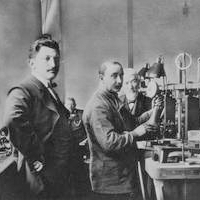Asscher Diamond Company

The Royal Asscher Diamond Company, began over 150 years ago as the I.J. Asscher Diamond Company in 1854 at Tolstraat 27 in Amsterdam, founded by Joseph Isaac Asscher, a famed diamond artisan well known in the field. Isaac Joseph Asscher, son of Asscher senior and namesake of the company, passed his knowledge of diamond cutting and the company down to his two sons Joseph and Abraham, who renamed the company the Asscher Diamond Company and oversaw the most prosperous years at the Asscher house. The company was again renamed the Royal Asscher Diamond Company in 1980 when it was given the Royal Prefix from Queen Juliana of Holland in recognition of the company’s global stature. The company headquarters remain in the original building, with regional headquarters in New York and Tokyo.
The Asscher company gained fame for cutting large and rare diamonds. In 1903 Abraham was commissioned to cut the Excelsior diamond, at 997 carats, it was the largest diamond ever found. The Excelsior required expert handling; inclusions within the rough diamond prevented it from being polished as a single stone. Abraham carved it into ten diamonds which were primarily sold to anonymous purchasers. Eventually Tiffany & Co. bought three stones of the Excelsior diamonds. Four years later the famous 3,106 carat Cullinan Diamond was discovered and presented to King Edward VII of England, who invited Joseph to cleave the diamond. The largest diamond ever found to that date, the stone required special tools and immense concentration to cut according to Asscher’s original calculations. The resulting diamonds later became part of Great Britain’s Crown Jewels.
The company is most famous for the “Asscher Cut” patented in 1902 by Joseph Asscher. The cut consists of a square cut diamond with chopped corners, a three-step crown, and a seven-step pavilion. The design, which presented a notably small table, allowed for a marked amount of reflected light, creating a sound measure of brilliance. This emblematic cut was the first signature cut to be patented. Over the early parts of the twentieth century, Joseph Asscher continued to refine what was quickly becoming known as the Asscher Cut Diamond. He eventually reduced the steps in the crown to two or three cuts, and the pavilion to three or four steps. The modifications to the Asscher cut increased the overall brilliance of the stone. During the Roaring Twenties Art Deco became the style of the day, daring angles were being set off with grand sweeping curves, and the dramatic cut of the Asscher diamond not only fit into this design aesthetic – it came to exemplify it.
Leading up to World War II the Asscher Diamond Company, as it was renamed in 1936, had great success, largely due to the popularity of the Asscher diamond and their exclusive patent for the cut. However, the approach of the Nazis and the outbreak of WWII nearly brought the demise of the Asscher company and family. During the war Amsterdam was occupied by Nazi forces, who seized all of the diamonds at the Asscher headquarters and deported the entire Asscher family and most of the diamond polishers employed by the firm to concentration camps. Only ten Asscher family members and fifteen of the original five hundred diamond polishers survived the concentration camps. Joop and Louis Asscher began to rebuild the company, remaining in the original Amsterdam location but focused their efforts on building sales in New York. The De Beers company was able to lend a hand, providing the Asschers with rough diamonds and access to the company’s diamond sights. Through this help, the Asschers were able to regain some of the strength that they had before, returning to their status as a first class diamond cutting company.





